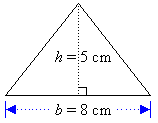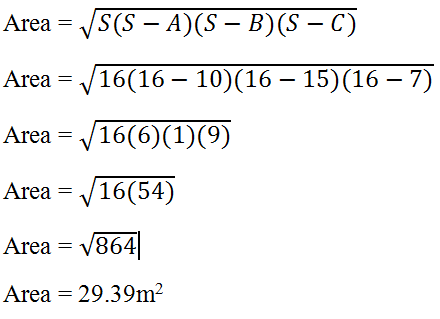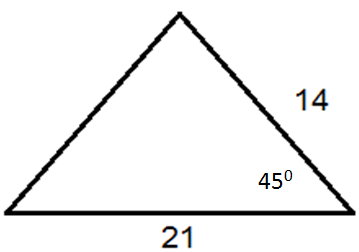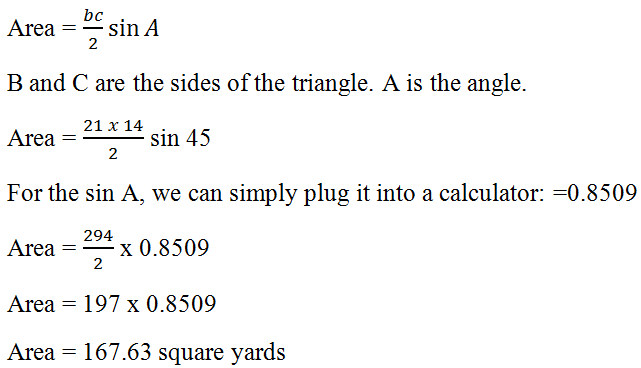Mary, Mary, Quite contrary,
How does your Garden grow?
Oh, not at all, my math skills are small
And the fertilizer I need, I don’t know!
For the poor gardener who isn’t sure how much potting soil to cover her little triangular patch of land, we have the wonderful world of the area of triangle equations. There are four basic types, and we can use the right one depending on which triangle we have.
Area of a Triangle: Base and Height
The easiest formula is when you have the base and the height. Let’s take a simple triangle:
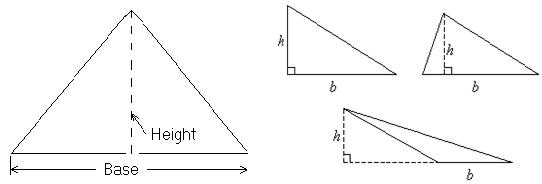
Pretty simple, huh? The height is the highest point from the base, which creates a straight line and a perpendicular line to the base. Any side can be the base—just rotate the triangle.
So what do we do with the height and base? The area is simply half of the Base X Height:
Area = ½(b x h)
Let’s get some numbers.
Area = ½ (b x h)
Area = ½ (8cm x 5cm)
Area = ½ (40 cm2)
Area = 20 cm2
Don’t forget the little “2” for cm! When we multiply the numbers, we also “multiply” the label. It’s in two dimensions, so add the “squared”!
Pretty easy, huh?
Area of a Triangle: Three Sides
But then, what if you don’t have the height or the base. But what if we did have the three sides? We can use Heron’s formula!
Here’s the formula, but you can also get math homework help for understanding this if you need:
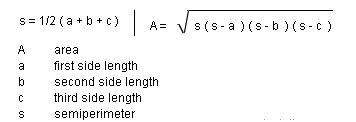
Here’s a triangle with the three sides, with the length in meters:
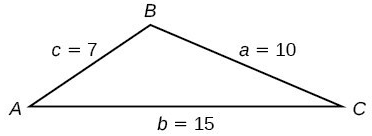
First, we need to find S.
S is simply all the sides of the triangle added up and then divided in half.
S = ½ (a + b + c)
S = ½ (10+7+15)
S = ½ (32)
S = 16
Then, we insert S and the three sides into the formula for the area:
Whew! The answer was actually much lengthier, but we rounded off the decimal point. Not every triangle comes out nice and clean.
FOR EQUILATERAL TRIANGLES ONLY!
Here’s a fun one. What if you had an equilateral triangle and only knew the measurement for ONE side?

Well, since all three sides of an equilateral triangle are the same, we know that if one side was 20m, then all sides are 20m.
You can use Herron’s formula above, or you can use this easier one:
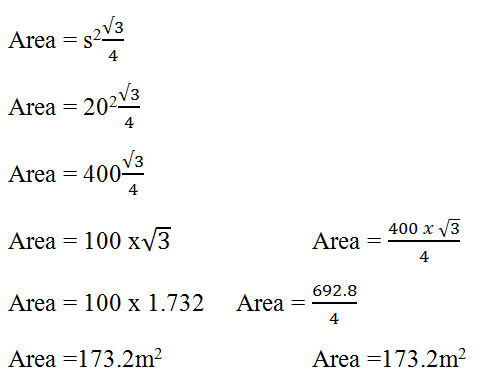
Well done!
All right, here’s the hardest one. If you love, simply LOVE trigonometry, and you only had two sides and the angle where those two sides intersected? Say, something like this, where length is measured in yards:
So, here’s the formula:
Mission accomplished! And Mary thanks you! Here’s a similar challenge regarding 45-45-90 triangles.

